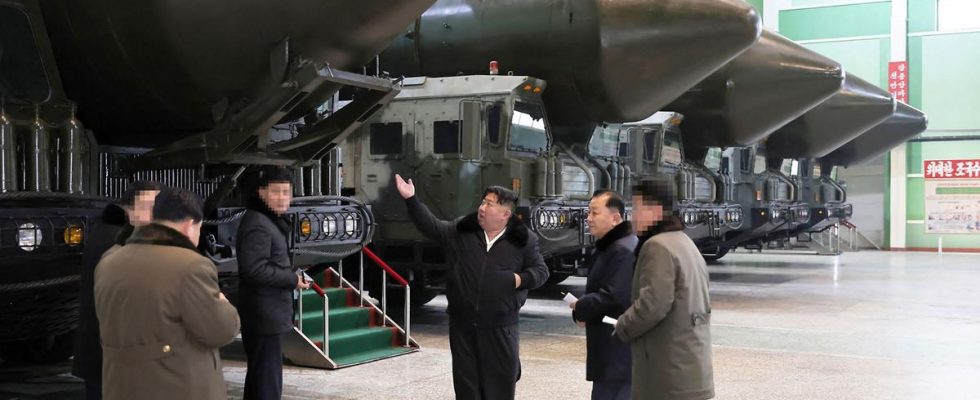North Korean leader Kim Jong-un. STR / AFP
At the end of a meeting of the central committee of the Workers’ Party of Korea in late December, North Korean leader Kim Jong-un ordered the acceleration of military preparations for a “war” that could “be started at anytime” on the peninsula.
Seoul ordered the evacuation of residents from Yeonpyeong Island, some 10 km from North Korea, after Pyongyang fired some 200 artillery shells off its west coast, the ministry said on Friday (January 5). South Korean Defense.
‘About 200 artillery shells were fired by North Korea (near) Yeonpyeong Island’, said a South Korean Defense Ministry official during a press conference. Officials on the island also told AFP that its residents had been asked to evacuate.
The Defense Ministry has not confirmed whether the order was prompted by North Korean artillery fire or South Korean exercises in response. However, a message sent to residents and confirmed by an island official states that “ naval gunfire » which would be carried out by South Korean troops from 3 p.m. (06:00 GMT) Friday. An official on Yeonpyeong Island, located just south of the disputed Northern Limit Line (NLL) maritime border, said the evacuation was ordered at the request of the South Korean military.
Provocative act according to Seoul
The North Korean fire did not cause any civilian or military damage to the South, the South Korean military said at a press briefing. “This is a provocative act that exacerbates tensions and threatens peace on the Korean Peninsula“, declared a spokesperson for the South Korean Joint Chiefs of Staff, urging his neighbor to “immediately stop these actions“, and warning that he will respond with measures “appropriate“.
Residents of Baengnyeong Island, located far west of Yeonpyeong and also near the maritime border, were also asked to evacuate, a village official said.
In 2010, Pyongyang fired 170 artillery shells at Yeonpyeong Island, killing four people, including two civilians, in the first North Korean attack against civilians since the Korean War (1950-1953).
Record number of missile tests
The two Koreas began a process of rapprochement in 2018, characterized by three meetings between Kim Jong-un and the South Korean president at the time, Moon Jae-in. But relations between the two Koreas deteriorated to a low point this year after Pyongyang’s launch of a spy satellite, which prompted Seoul to partially suspend a 2018 military deal aimed at defusing tensions.
At the end of a meeting of the central committee of the Workers’ Party of Korea in late December, North Korean leader Kim Jong-un ordered the acceleration of military preparations for a “war» who could «be triggered at any time» on the peninsula.
In 2023, North Korea conducted a record number of ballistic missile tests, in violation of numerous UN resolutions prohibiting it.
The country also engraved its status as a nuclear power in its Constitution, and successfully tested the Hwasong-18, the most powerful intercontinental ballistic missile (ICBM) in its arsenal, capable of reaching the United States.

